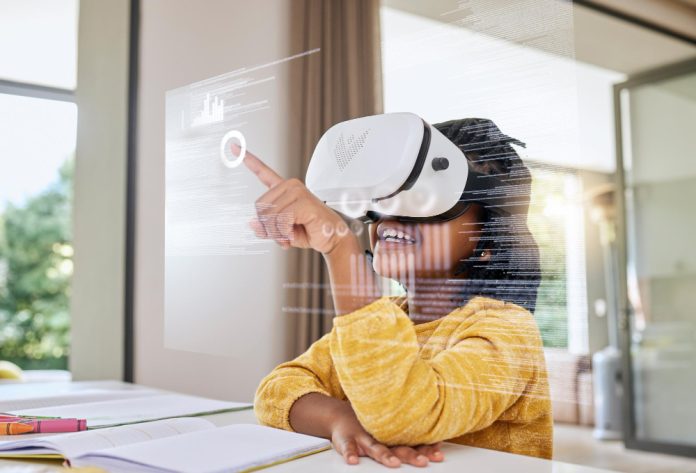Virtual Reality (VR) is no longer just a futuristic concept—it’s a powerful tool that’s reshaping how we learn and teach. In the education and corporate training sectors, virtual reality in learning is enabling immersive, interactive experiences that drive deeper understanding, better retention, and increased learner engagement.
What Is Immersive Learning?
Immersive learning uses extended reality (XR) technologies, including VR and AR, to simulate real-world environments or complex concepts in a 3D, interactive space. Learners are placed in controlled virtual scenarios where they can explore, practice, and problem-solve without real-world consequences.
Whether it’s a biology student exploring the human body in 3D or a technician practicing hazardous procedures safely in a virtual environment, immersive learning bridges the gap between theory and application.
The Rise of Virtual Reality in Learning
With the proliferation of affordable VR headsets and content platforms, educational institutions and enterprises alike are integrating VR into learning ecosystems. Unlike traditional eLearning, which is often passive, VR provides experiential learning—a key factor in skill development and memory retention.
Studies show that learners retain up to 75% of content through experiential learning compared to just 10% from reading or lectures. VR taps into this advantage by engaging multiple senses and emotions.
Applications Across Sectors
In Education
- Simulations of scientific experiments without physical lab risks
- Historical reenactments and virtual field trips
- Language immersion environments for practicing conversations
In Corporate Training
- Onboarding programs that reduce time-to-productivity
- Soft skills training, such as public speaking or customer service
- Safety and compliance training in high-risk industries like healthcare and manufacturing
In Healthcare and Aviation
- Surgical procedure simulations
- Aircraft maintenance training without access to physical jets
Benefits of Virtual Reality in Learning
- Engagement and Motivation
VR makes learning fun, interactive, and curiosity-driven. It captures attention better than slides or videos. - Safe Learning Environments
Learners can practice risky tasks—like operating heavy machinery or performing surgery—without real-world consequences. - Personalized Learning
VR tools can adapt scenarios based on individual performance, offering a personalized path to mastery. - Global Accessibility
Students and professionals from around the world can access the same high-quality training without being in the same location.
The Road Ahead
As VR hardware becomes more affordable and content creation tools become easier to use, virtual reality in learning is expected to become mainstream. The future of education and training will be shaped by experiential, immersive, and tech-enabled learning environments that cater to how modern learners absorb knowledge.
Organizations investing in VR are not just enhancing learning—they’re preparing their people for a smarter, safer, and more agile future.











